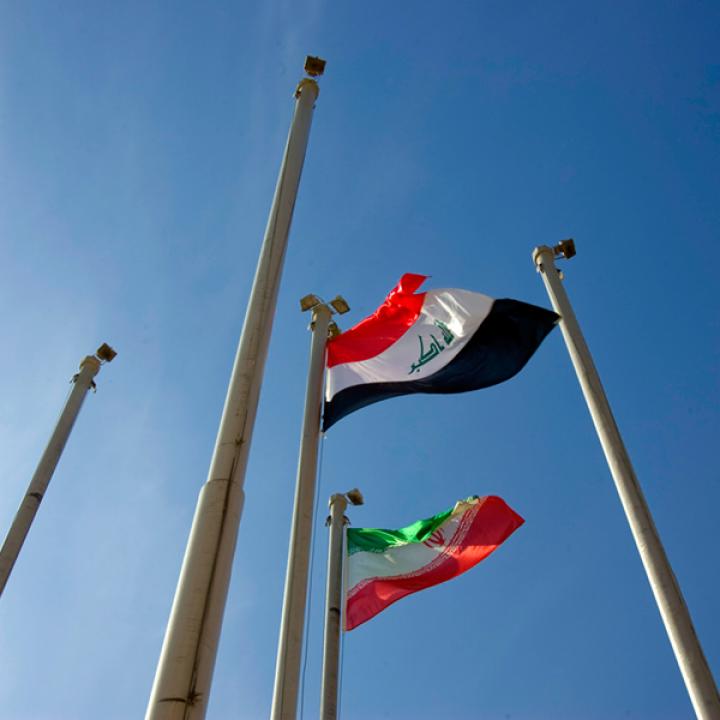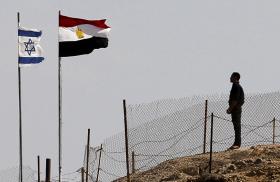
- Policy Analysis
- Fikra Forum
Abadi’s Scylla and Charybdis: Navigating the Iraq-Iran Relationship

January 17, 2018
The Iraqi narrative is simple and slightly apologetic: While the danger may have been over-felt, still, the “Islamic State” was at the gates of Baghdad, threatening to storm the capital city, and bluntly promising large-scale massacres of its Shia population. Thus sweeping through the majority of northeastern Iraq in the spring of 2014. While demonstrably incompetent, and bearing much of the responsibility for the collapse of the Iraqi Armed Forces, the government of Prime Minister Nouri al-Maliki, at the time, sought the support of friends and allies to halt and reverse the jihadist assault. The Obama Administration, having finalized a rushed withdrawal from Iraq three years prior, responded to the urgent request with a list of demands — much of an academic character, including benchmarks of sound governance and communal inclusiveness — as a condition for meaningful support. The Arab neighbors of Iraq seemed to adopt a spectator stance towards the possible demise of a Baghdad government of which they had vocally disapproved. Only Iran stepped up to assist a neighbor in distress, shipping needed equipment and dispatching an expeditionary force.
Iraq was able to turn the tide and ultimately recapture virtually all of the fallen territory. The support of the United States eventually materialized and was crucial to Iraq prevailing. However, the moment of the “siege” of Baghdad was a defining turning point in the relationship between Iraq and Iran. Tehran graduated from the stealth power-broker in post-Saddam Iraq into an open determining presence across all facets of Iraqi life.
The “Islamic State” offensive provided Iran with another major asset in Iraq: the Popular Mobilization Units (PMU), modeled as a hybrid of Iran’s proxy in Lebanon—Hezbollah—and of Iran’s own Basij para-military, now integrated into the Islamic Revolutionary Guards Corps (IRGC). The most prominent Iraqi Shia cleric, Ali al-Sistani, who had sought to avoid the Iranian formula of a clerically-supervised polity, was induced to provide the legitimization for the creation of the PMU, many factions of which later pledged allegiance to the Iranian Supreme Guide. While having tried to avoid an internal duality of political authority inside Iraq, and having insisted that respect to the Marja‘iyyah (the collective of prominent Shia clerics in Najaf) ought to remain within the confines of moral guidance, not political authority, Sistani stance was subverted by his own action.
Less evident is that the Iranian brazen presence has also invigorated a latent, often battered, but never obviated Iraqi nationalism. Nouri al-Maliki had been accused of being controlled by Iran. In fact, even Maliki, with his acute factional affinity to Iran, has attempted to preserve a space of Iraqi national authority, surrendering it as a function of his successive failures with neighbors (Turkey included), as well as Sunni, Kurdish, and Shia political factions inside Iraq.
The choice of Haider al-‘Abadi as the next Prime Minister was conceived by many as settling for the least common denominator—a political figure not offensive to any of Iraq’s internal stakeholders and external interlocutors. Abadi was viewed by many as a placeholder while the real powerhouses sort out a more lasting compromise, or until one of them prevails. Instead, Abadi has demonstrated considerable skills in overseeing a deeply flawed and dysfunctional state structure; in maneuvering a thoroughly fractured Shia Iraqi political scene, proving his on-going worth as its compromise flag-bearer; and in managing an increasingly demanding Iranian “partner”—satisfying its voracious expansion while maintaining a margin of independence vis-à-vis its will and diktat.
The “formula” implicitly adopted by Abadi was to concentrate his efforts, time, and discourse on the main challenges facing Iraq, refusing to be diverted to any issues, whether political, diplomatic, or identity, that do not serve the primary focus. As the post–IS offensive Prime Minister, Abadi assumed his role as commander-in-chief of the Iraqi Armed Forces with close to a single-minded dedication intent on defeating the jihadists and restoring Iraqi sovereignty. While in line with the U.S.-led coalition tasked with downgrading and ultimately defeating the Islamic State, Abadi’s drive was eminently compatible with Iran’s plan to entrench the PMU into Iraq’s defense structure. A generous appreciation of Abadi’s management of this plan is to note that by officially integrating the PMU under his nominal command, Abadi set the course for potential leverage over this disparate group of Iranian-funded militias, and averted a potential descent into chaos. A less generous reading would consider that Abadi’s action legitimized Iranian influence and allowed a non-revocable foreign control over a considerable part of Iraq’s defense apparatus. In fact, the PMU was a necessary component of the ground forces required to oust IS. Furthermore, their de facto presence offered Abadi only unenviable choices. The one taken may indeed have been the least bad.
It is in the aftermath of the victory against the Islamic State that Abadi’s PMU choice manifests its negative potential. Iran has directed its PMU proxies in two directions, each detrimental to a sovereign and sound Iraq. PMU factions have been dispatched for combat in Syria, bypassing all administrative decorum that places them under Iraqi government command. The logic applied is that their participation in external action is merely under their original para-military flag, not as Iraqi government affiliated PMU. The Abadi integration of the PMU is thus proven to be selective and utilitarian. More ominously, the PMU leadership, which has often bypassed and contradicted official Iraqi positions, has declared its intent to transform into a political party. The Iraqi situation may not be as ideal for Iran and its PMU as was Lebanon and Hezbollah, but the latter seem indeed to provide the template for the Iranian penetration and subversion of Iraq as a polity.
A subtle message communicated by Abadi to Iraq’s Iranian handlers is that his steady leadership, even while not providing the absolute control offered by a PMU dominance, is more compatible with Iranian interests than the descent into chaos that may result from a PMU victory. Iran has successfully tamed much of the Lebanese political scene, allowing potential foes to fulfill their agendas while providing cover for its stealth occupation. Abadi provides Iran with a similar arrangement. An Abadi-led Iraq capitalizes on the legitimacy and the good relations with many international actors, as developed and maintained during the war with the Islamic State. The hope that Abadi would prevail would shield Iraq from many hostile actions, allowing Iran a deeper, firmer, more lasting entrenchment in its polity and society.
Yet, Iraq is not Lebanon, nor is Abadi a Hassan Rouhani—a possibly well-meaning “president” set to fail in any attempt to break free from the clerical-IRGC control if the best expectations about his intentions were proven to be true. It is a long path for an Iraq free of Iranian control. There can be no confirmation that the intent of Abadi is to extract Iraq from Iran’s grasp; in fact, his official position, as well as that of Iraq’s Iranian overlord, Qasem Soleimani, is that no such grip exists except in the discourse of those who want to break the fraternal bonds between Iran and Iraq. But if a path to Iraqi freedom were to be designed, against the backdrop of the heavy Iranian presence and the lack of regional and international resolve in its support, it would be through the affirmation of the need to capitalize on the Iraqi victory against the Islamic State to seek political reform and social justice, root out corruption and address the deep causes of radicalization. This indeed happens to be the program of Haider al-‘Abadi.


